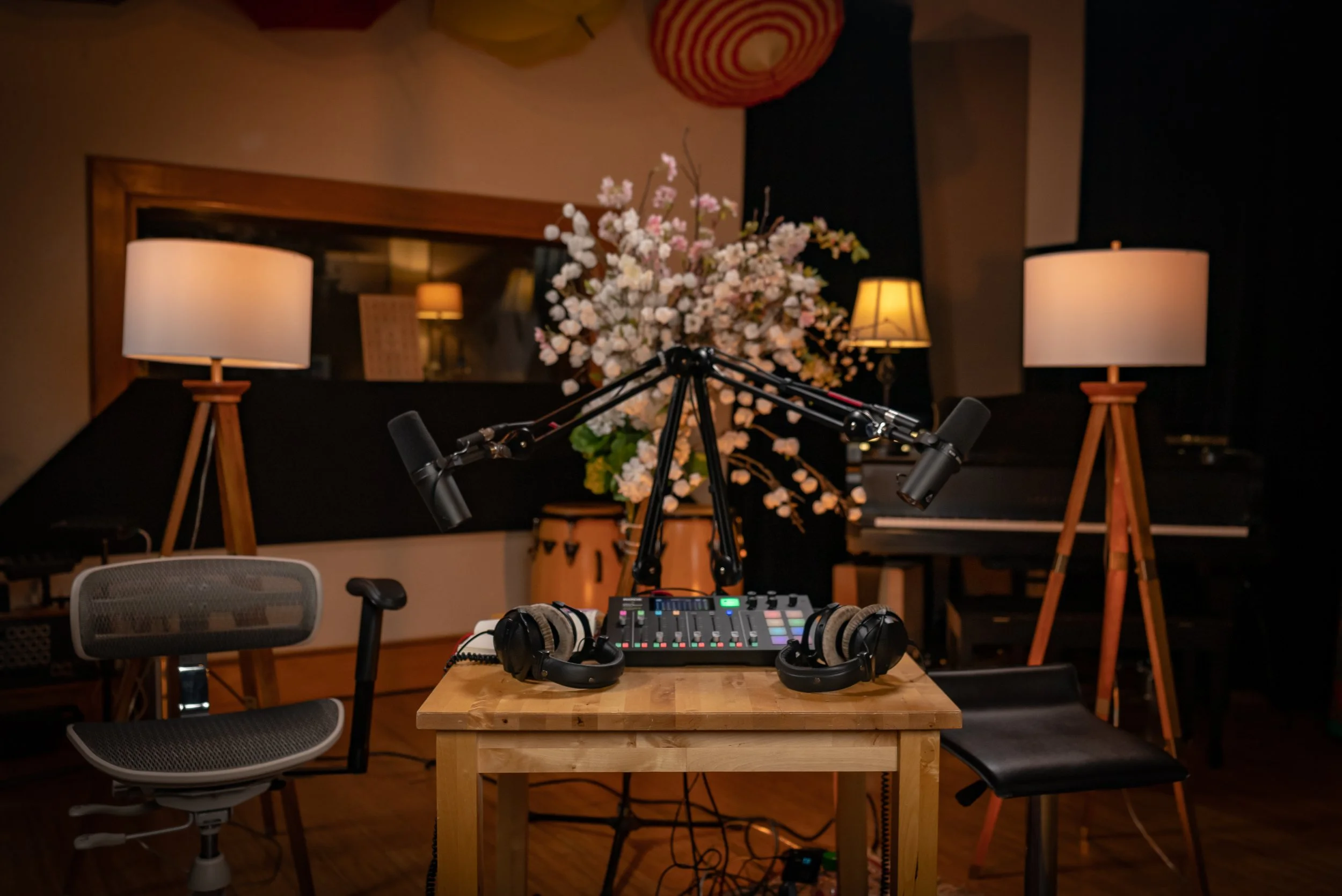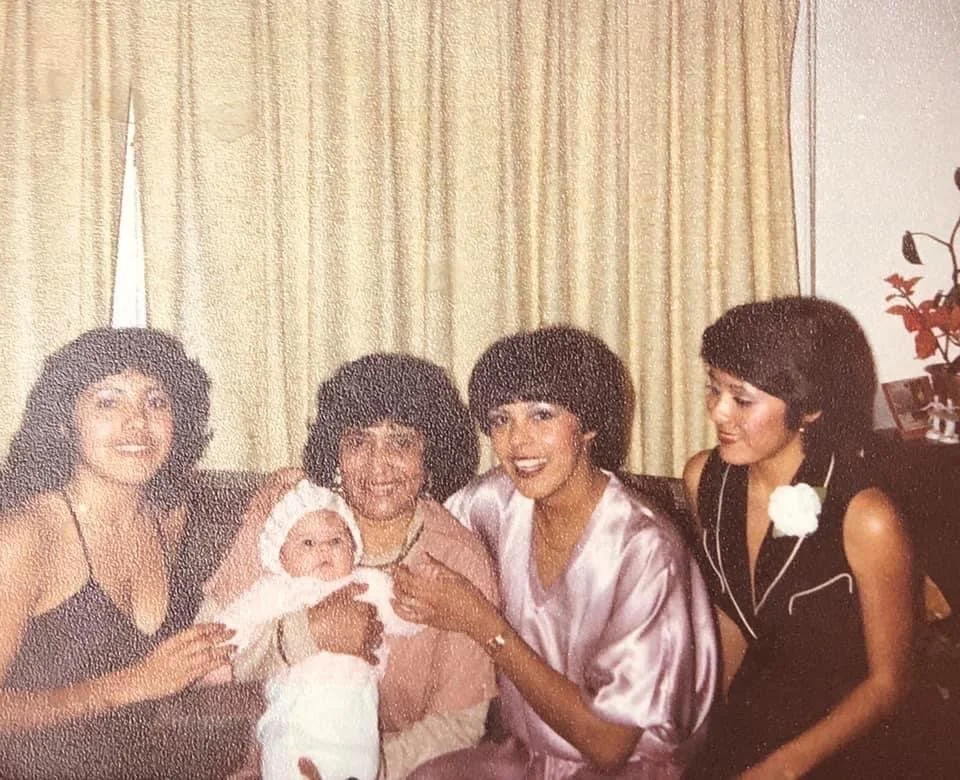The Archaeology of Fashion
This podcast is a safe space that spotlights and shares the stories behind secondhand objects and how they are used to express and represent one’s self-identity. Its objective focuses on exploring and illuminating narratives that reflect the relationship between a garment and its wearer from the perspective of first-generation Americans and second-generation immigrants.
It is a research project combining visual & material culture that investigates sartorial representations of self-identity using garments of the past through contemporary archaeology.
Objective
A focus on exploring and spotlighting stories that reflect the relationship between a garment and its wearer. Items include personal archives, vintage fashions, secondhand clothes, hand-me-downs, and family heirlooms contextualized by the stylization process from its previous wearers to their contemporary owners.
-
A brief overview of the origin of the garment.
-
Storytelling & Cultural Meanings
-
Sartorial representations as self-portraits
Research Process
-
The field of archaeology requires participants to explore excavation sites to reveal hidden secrets or lost narratives about human history. These stories are often discovered and pieced together by the analysis and identification of recovered artifacts that provide clues into how people lived in the past.
The archaeology of the contemporary past (late 19th - 21st century) is an emerging area of research activity that deals with the world we have experienced and shaped through our daily lives and practices. The modern landscape contains traces left yesterday alongside those of prehistory and everything in between. It is a subfield that is not defined by a focus on a specific period, but rather as a particular disposition toward time, material things, and the archaeological process.
To ensure the preservation of these findings respectively and ethically, archivists become the guardians of these historical narratives while preserving the actual materials.
As a fashion archivist and vintage/ ephemera collections specialist in my professional work, I became fascinated by the “hunt,” a term often used by vintage collectors and thrift shoppers when discovering hidden gems found at undisclosed locations. After my tumultuous acquiring expeditions, I found myself using material culture methodologies practiced within the field of archaeology when examining a garment of the past. It became a framework for my findings as clothing can be seen as an intimate part of human behavior and reflect a collective group activity of certain periods. When researching each piece, I would investigate:
What have I found?
What is it made from?
Why is it that shape?
Is it complete?
The archaeology of fashion combines forms of discovery, (past and present) zeitgeists, and the preservation of sociocultural narratives through the relationship of the object and its wearer in attempts to decode cultural meanings of dress, fashion, and clothing through stylization. Unlike archives that are often used to preserve artifacts within closed private settings, the goal of this project is to unveil what might have otherwise seeped through the fabric of history.
-
A fashion historian is able to research the origin of a garment to identify its place and significance in history. A fashion archivist completes museum-standard practices that are required when preserving artifacts in storage or a library. A fashion archaeologist actually conducts the grunt work and travels to the locations in which these items are found (includes but is not limited to thrift stores, vintage boutiques, auction houses, online vendors, estate sales, yard bargains, personal closets, etc.).
-
A combination of factors:
1. My inquisitiveness and interest to preserve stories of the past through the garments we wear were further enhanced during a visit to CJM’s Levi Strauss: A History of American Style exhibition. It was one artifact in particular that captured the relationship between fashion and archaeology (refer to the image above).
2. Being a self-proclaimed “fashion archaeologist” often described in my bios for profiles, the title became a point of curiosity and questionable among my fellow field professionals.
Terminology
-
Physical objects that represent a particular culture produced and used by humans.
-
Composed of matter (fiber, fabric, textile); characteristics of objects.
-
Generic raw materials of what a person wears.
-
Implies an elite and symbolic mode of dress; recognition of designing clothing as an art form and not just as a craft; collective display of taste.
-
Arrangement of principal outer garments and personal attire.
-
Dress belonging to a nation, class, or period.
-
Distinctive dress is worn by members of any profession; functional purpose versus aesthetics.
-
Everyday practice of constructing a ‘look’ that involves a series of decisions that are informed by our upbringing, our community, our mood, our experiences, and how we wish to be seen.
-
Aspects of culture expressed in visual images focusing on the reception and intention as well as the ideological aspect.












![“[…] too often stories are washed out of clothing when they enter the museum, nowadays not so much the personal biography of the original owner but still those histories of the guardians of garments, who have stored but not worn clothing](https://images.squarespace-cdn.com/content/v1/63267e8fe37f66705b41d4a7/1739482828261-05Z3UBPAJB5U9723VZ28/image-asset.jpeg)


![I purchased the book 𝘚𝘪𝘦𝘮𝘱𝘳𝘦 𝘝𝘪𝘷𝘢𝘴: 𝘔𝘶𝘫𝘦𝘳𝘦𝘴 𝘌𝘹𝘵𝘳𝘢𝘰𝘳𝘥𝘪𝘯𝘢𝘳𝘪𝘢𝘴 𝘦𝘯 𝘭𝘢 𝘏𝘪𝘴𝘵𝘰𝘳𝘪𝘢 𝘥𝘦 𝘌𝘭 𝘚𝘢𝘭𝘷𝘢𝘥𝘰𝘳 [English translation, Always Alive: Extraordinary Women in the History of El Salvador] for simple plea](https://images.squarespace-cdn.com/content/v1/63267e8fe37f66705b41d4a7/1739482830283-ZNOFFCZU61WQ1YJMHVK1/image-asset.jpeg)


